- Choosing the Right Pereskia Plant
- Providing Adequate Sunlight for Your Pereskia
- 1. Choose the right location
- 2. Monitor the sun exposure
- 3. Protect from intense afternoon sun
- 4. Rotate the plant
- 5. Use appropriate windowsill protection
- 6. Gradually introduce to direct sunlight
- Watering and Humidity Needs for Pereskia
- Watering
- Humidity
- Fertilizing Your Pereskia Plant
- 1. Choose the Right Fertilizer
- 2. Apply Fertilizer During the Growing Season
- 3. Follow the Fertilizer Package Instructions
- 4. Use a Diluted Fertilizer Solution
- 5. Apply Fertilizer to Moist Soil
- 6. Fertilize Regularly
- 7. Monitor the Plant’s Response
- 8. Adjust Fertilizer Application for Outdoor vs. Indoor Plants
- Pruning and Shaping Your Pereskia
- 1. Choosing the right time
- 2. Use clean, sharp tools
- 3. Remove dead or damaged parts
- 4. Shape the plant
- 5. Avoid over-pruning
- 6. Regular maintenance
- Dealing with Common Pests and Diseases in Pereskia
- Pests:
- Diseases:
- Transplanting and Repotting Your Pereskia
- 1. Choosing the right time
- 2. Selecting a new pot
- 3. Preparing the new pot
- 4. Gently removing the plant
- 5. Placing the Pereskia in the new pot
- 6. Watering and care after transplanting
- Troubleshooting Common Issues with Pereskia
- 1. Overwatering
- 2. Underwatering
- 3. Pests
- 4. Leaf Discoloration
- 5. Stunted Growth
- Conclusion
- Q&A:
- What is Pereskia and why is it popular as a houseplant?
- How often should I water my Pereskia plant?
- Can I grow Pereskia from seed?
- How much light does Pereskia need?
- Does Pereskia require any special care during winter?
- Video: Here’s the best tip for growing bigger succulents from leaves
Pereskia is a genus of flowering plants in the Cactaceae family. Unlike most cacti, Pereskia species have leaves and can even be considered as shrubs or small trees. These plants are native to Central and South America and are often grown as ornamental plants for their attractive foliage and delicate flowers. If you’re interested in adding a touch of tropical beauty to your home, here are some tips for caring for and growing Pereskia at home.
Light: Pereskia plants thrive in bright, indirect light. Place them near a sunny window where they can receive a few hours of direct sunlight each day. However, be cautious of placing them in intense, full sun, as this can cause sunburn and damage to the leaves.
Water: Water your Pereskia plants regularly, allowing the top inch of soil to dry out before watering again. These plants prefer slightly moist soil, but they are sensitive to overwatering. Ensure that the potting mix drains well and avoid leaving the plant sitting in water, as this can lead to root rot.
Fertilizer:
Pereskia plants benefit from regular feeding during the growing season. Use a balanced, water-soluble fertilizer diluted to half strength every two weeks. This will provide the necessary nutrients for healthy growth and vibrant blooms.
Temperature: Pereskia plants prefer warm temperatures and can be grown successfully in average room temperature conditions. However, they are sensitive to cold drafts and frost. Keep these plants away from windows and doors that may expose them to cold air during the winter months.
With the right care, Pereskia plants can be a beautiful addition to your indoor garden. Follow these tips, and you’ll be rewarded with lush foliage and stunning flowers that will brighten up any space.
Choosing the Right Pereskia Plant
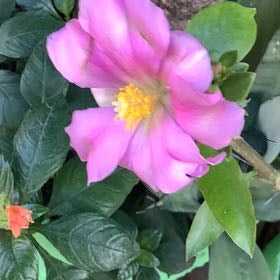
When it comes to choosing a Pereskia plant, there are a few factors to consider in order to ensure that you find the right one for your home and garden. Here are some tips to help you make the best choice:
- Choose the right species: Pereskia is a genus that consists of several species, each with its own unique characteristics. Some species have more compact growth habits, while others can grow quite large. Consider the size and growth habit of the plant when making your selection.
- Consider your climate: Pereskia plants are native to tropical and subtropical regions, so they generally prefer warm and humid conditions. However, some species are more tolerant of cooler temperatures than others. If you live in a colder climate, make sure to choose a species that can tolerate lower temperatures.
- Check for availability: Not all nurseries or garden centers may carry Pereskia plants, so it’s important to check for availability before making a trip. You may need to consult with specialty plant nurseries or search online to find the specific species you are looking for.
- Inspect the plant: Before purchasing a Pereskia plant, be sure to inspect it for any signs of damage or disease. Look for healthy, vibrant leaves and stems, and avoid plants with wilting leaves or spots. Additionally, check for any signs of pests, such as mealybugs or aphids.
- Consider your experience level: Some species of Pereskia plants may be more suitable for experienced gardeners, while others are more forgiving and easy to care for. If you are new to gardening or are looking for a low-maintenance plant, choose a species that is known for being relatively easy to grow.
By considering these factors when choosing a Pereskia plant, you can find the perfect addition to your indoor or outdoor garden. Remember to provide the necessary care and conditions for your plant to thrive, and enjoy watching it grow and flourish.
Providing Adequate Sunlight for Your Pereskia
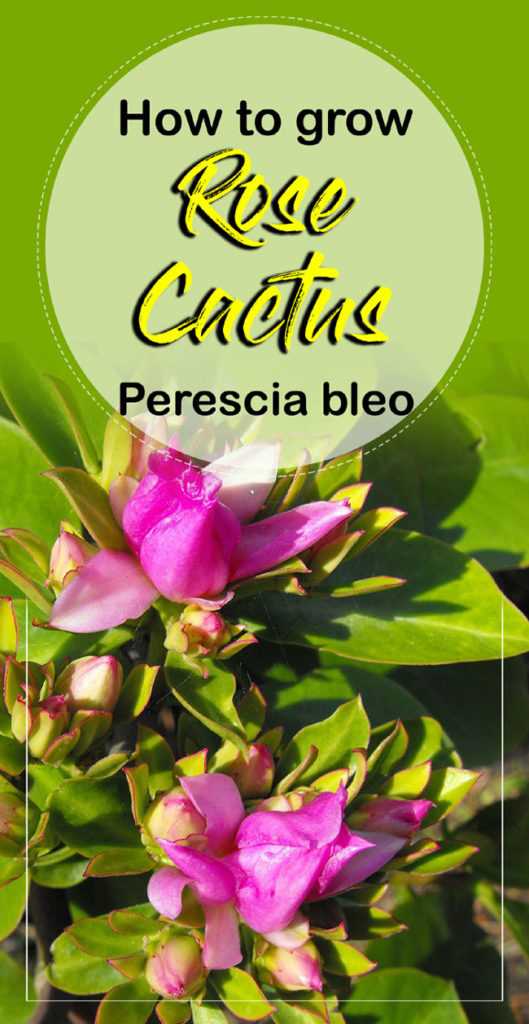
In order for your Pereskia to thrive and grow healthy, it is important to provide them with adequate sunlight. Here are some tips to ensure your Pereskia receives enough sunlight:
1. Choose the right location
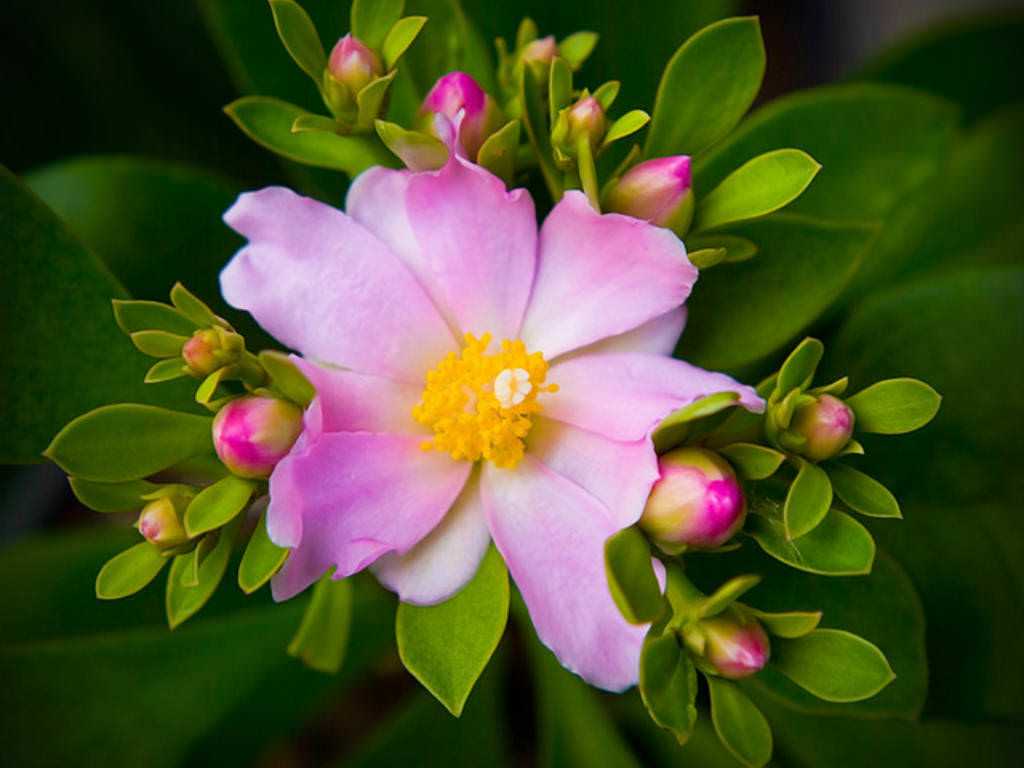
Pereskia plants prefer bright light, so it is important to place them in a location where they can receive direct sunlight for at least 6 hours a day. Choose a location near a sunny window or a spot in your garden that receives full sun.
2. Monitor the sun exposure
Observe how much sunlight your Pereskia is receiving during different times of the day. If you notice that it is not getting enough direct sunlight, consider moving it to a different location. Alternatively, you can use artificial grow lights to supplement the natural sunlight.
3. Protect from intense afternoon sun
While Pereskia plants require sunlight, they can be sensitive to intense afternoon sun. If your plant is placed in a location where it is exposed to direct sunlight during the hottest part of the day, consider providing some shade during those hours to prevent leaf burn.
4. Rotate the plant
To ensure even growth and prevent the plant from leaning towards the light, rotate your Pereskia every few weeks. This will help all parts of the plant receive equal sunlight and promote a balanced shape.
5. Use appropriate windowsill protection
If you have your Pereskia on a windowsill, it is important to provide protection to prevent heat damage. Use curtains, blinds, or window films to reduce the intensity of sunlight and protect the plant from overheating.
6. Gradually introduce to direct sunlight
If you are starting with a young or newly propagated Pereskia, it is important to acclimate it to direct sunlight gradually. Start by placing it in a location where it receives indirect sunlight and gradually increase the exposure over a few weeks. This will prevent sunburn and allow the plant to adapt to the intense light.
By providing your Pereskia with the right amount of sunlight, you can ensure its healthy growth and vibrant appearance. Remember to observe the plant’s responses and make adjustments accordingly to optimize its sunlight exposure.
Watering and Humidity Needs for Pereskia
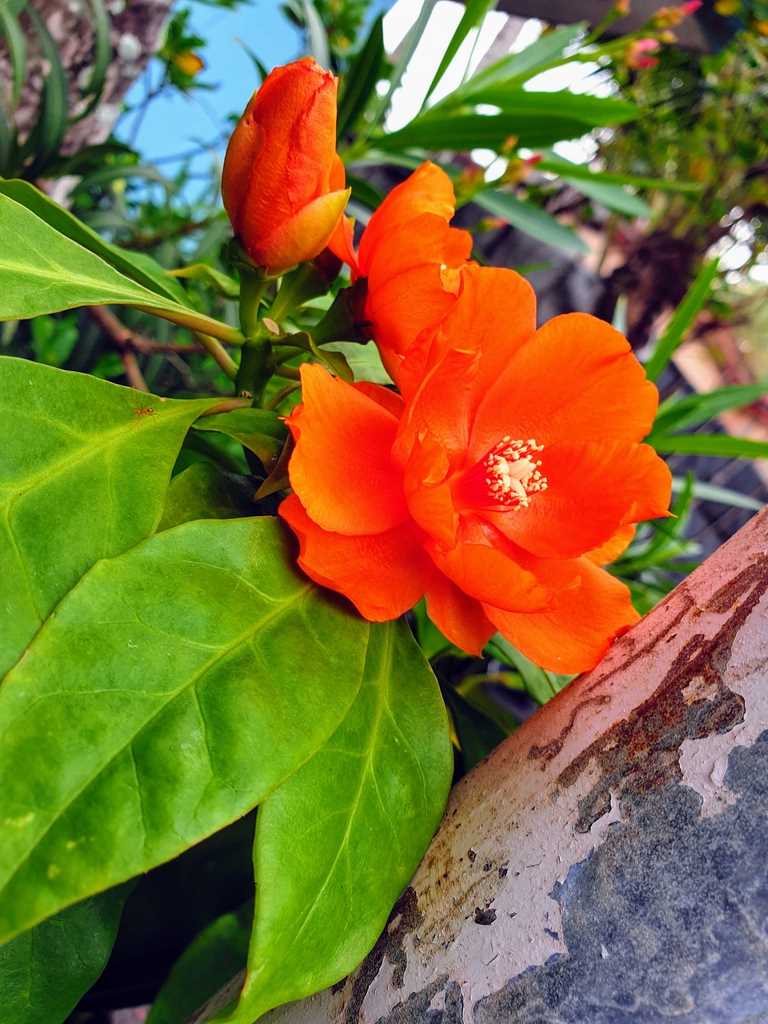
Pereskia plants have specific watering and humidity needs to thrive and grow at home. Here are some tips to help you understand how to maintain the best conditions for your Pereskia:
Watering
Pereskia plants require regular watering, but you should be careful not to overwater them. Here are some guidelines:
- Water the plant when the top inch of soil feels dry to the touch. Insert your finger into the soil to check the moisture level.
- Ensure that the pot has drainage holes to prevent water from sitting in the bottom, which can lead to root rot.
- Water the plant thoroughly until water drains out of the bottom of the pot.
- Allow the soil to dry out partially between waterings, but avoid letting it become completely dry.
- During the winter months or inactive growth periods, reduce the frequency of watering to avoid overhydration.
Humidity
Pereskia plants appreciate moderate to high humidity levels. Here’s how you can create a humid environment for your plant:
- Mist the leaves with water regularly to increase humidity. This is especially important during dry winter months or in dry indoor environments.
- Place a tray filled with water and pebbles beneath the plant. As the water evaporates, it will provide additional humidity.
- Grouping plants together can also increase humidity as they release moisture through transpiration.
- Avoid placing Pereskia plants near heating or cooling vents, as these can reduce humidity levels in the immediate vicinity.
By following these watering and humidity guidelines, you can provide the optimal conditions for your Pereskia plant to thrive and grow successfully at home.
Fertilizing Your Pereskia Plant
Fertilizing your Pereskia plant is an important part of its care routine to ensure healthy growth and vibrant foliage. Here are some tips to help you fertilize your Pereskia plant effectively:
1. Choose the Right Fertilizer
When selecting a fertilizer for your Pereskia plant, opt for a balanced blend with a ratio of equal parts nitrogen, phosphorus, and potassium (NPK). This will provide the necessary nutrients for overall plant health.
2. Apply Fertilizer During the Growing Season
Apply fertilizer to your Pereskia plant during the growing season, which is typically spring and summer. Avoid fertilizing during the dormant period in fall and winter.
3. Follow the Fertilizer Package Instructions
Read and follow the instructions on the fertilizer package for the correct amount to use. Over-fertilizing can harm your Pereskia plant, so it’s important to follow the recommended dosage.
4. Use a Diluted Fertilizer Solution
Dilute the fertilizer with water according to the package instructions before applying it to your Pereskia plant. This will prevent fertilizer burn and minimize the risk of over-fertilization.
5. Apply Fertilizer to Moist Soil
Water your Pereskia plant thoroughly before applying fertilizer. This will ensure that the nutrients are evenly distributed in the soil and absorbed by the roots.
6. Fertilize Regularly
For best results, fertilize your Pereskia plant regularly throughout the growing season. This will provide a steady supply of nutrients to support its growth and development.
7. Monitor the Plant’s Response
Observe how your Pereskia plant responds to the fertilizer. If you notice signs of over-fertilization, such as leaf discoloration or wilting, reduce the amount or frequency of fertilization.
8. Adjust Fertilizer Application for Outdoor vs. Indoor Plants
If you have an outdoor Pereskia plant, adjust the fertilization schedule based on the soil conditions and weather. Indoor plants may require less frequent fertilization due to their confined growth environment.
Remember, fertilizing is just one aspect of caring for your Pereskia plant. It’s essential to provide adequate sunlight, water, and proper drainage to ensure the overall well-being of your plant.
Pruning and Shaping Your Pereskia
Pruning is an important aspect of caring for your Pereskia plant. It helps to maintain its shape, promote new growth, and remove any dead or damaged parts. Here are some tips for pruning and shaping your Pereskia:
1. Choosing the right time
It is best to prune your Pereskia plant during its active growing season, which is typically in spring or early summer. Pruning during this time allows the plant to recover quickly and encourages healthy growth.
2. Use clean, sharp tools
Before starting the pruning process, make sure to clean your pruning tools to prevent the spread of diseases or infections. Use sharp and clean pruning shears or scissors to make precise cuts.
3. Remove dead or damaged parts
Start by removing any dead, diseased, or damaged parts of the plant. This includes yellowing or discolored leaves, stems, or branches. Cut them close to the main stem or branch, ensuring a clean cut.
4. Shape the plant
If you want to shape your Pereskia plant, you can selectively prune certain branches or stems to achieve the desired shape. This can be done by cutting back the branches to the desired length or removing entire branches to create a more compact shape.
5. Avoid over-pruning
While pruning is necessary for optimal growth, it is important not to over-prune your Pereskia plant. Over-pruning can weaken the plant and lead to stunted growth. Only prune the necessary parts and avoid cutting back more than one-third of the plant at a time.
6. Regular maintenance
To maintain the shape of your Pereskia plant, regular pruning and shaping may be required. This can be done by removing any new growth that is out of place or by trimming back branches that are growing too long or are becoming overcrowded.
By following these pruning and shaping tips, you can help your Pereskia plant to thrive and maintain an attractive shape. Remember to always observe your plant and adjust your pruning techniques as needed.
Dealing with Common Pests and Diseases in Pereskia
Just like any other plant, Pereskia can be susceptible to pests and diseases. Here are some common issues you may encounter and how to deal with them:
Pests:
- Aphids: These small insects can cluster on the leaves and stems, sucking the sap and causing yellowing and distortion. Use insecticidal soap or neem oil to control them.
- Mealybugs: Mealybugs look like tiny white cotton balls and can be found on the stems and undersides of leaves. Use a cotton swab dipped in rubbing alcohol to remove them.
- Spider mites: These tiny pests cause yellow spots and webbing on the leaves. Rinse the plant with a strong stream of water or use insecticidal soap to control them.
- Scale insects: Scale insects are small, oval-shaped pests that attach themselves to the stems and leaves. Use a cotton swab dipped in rubbing alcohol to remove them.
Diseases:
- Leaf spot: Leaf spot is characterized by circular, dark spots on the leaves. Remove and destroy affected leaves and avoid overhead watering.
- Root rot: Root rot is caused by overwatering and poorly draining soil. Ensure the plant is not sitting in water and adjust watering accordingly.
- Powdery mildew: Powdery mildew appears as a white, powdery coating on the leaves. Remove affected areas and improve air circulation around the plant.
- Crown rot: Crown rot is caused by overwatering and can cause the stem and base of the plant to rot. Remove affected areas and adjust watering practices.
If your Pereskia is experiencing any of these pests or diseases, it’s important to address them promptly to prevent further damage. Regularly inspecting your plant and practicing good sanitation can also help prevent pests and diseases from becoming a problem.
Transplanting and Repotting Your Pereskia
If your Pereskia has outgrown its current pot or needs fresh soil, it may be time to transplant or repot it. Here are some important considerations and steps to follow:
1. Choosing the right time
The best time to transplant or repot your Pereskia is during its active growing season, typically in spring or early summer. This allows the plant to recover quickly and establish its roots in the new container.
2. Selecting a new pot
Choose a pot that is slightly larger than the current one, with good drainage holes to prevent waterlogged soil. Pereskias prefer clay or terracotta pots as they allow for better airflow and drainage.
3. Preparing the new pot
Place some well-draining potting mix at the bottom of the new pot, ensuring there is enough space for the Pereskia’s root ball.
4. Gently removing the plant
Carefully remove the Pereskia from its current pot by gently loosening the soil around the edges. Be cautious not to damage the roots. If the plant is root-bound, you may need to gently tease apart the roots to encourage new growth.
5. Placing the Pereskia in the new pot
Position the Pereskia in the center of the new pot, making sure it sits at the same depth it was in the previous pot. Fill the remaining space with fresh potting mix, gently firming it around the roots. Leave some space at the top for watering.
6. Watering and care after transplanting
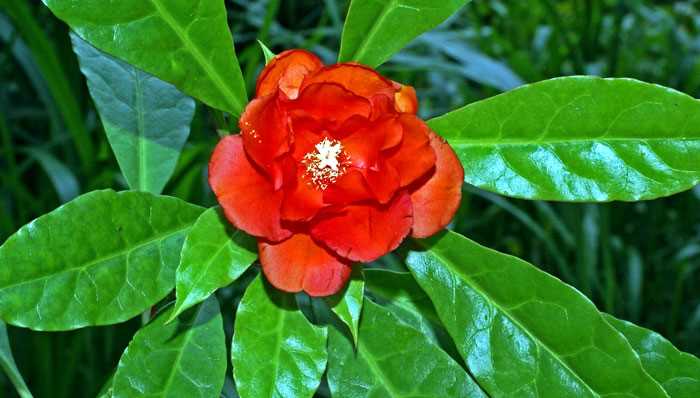
After transplanting, give the Pereskia a thorough watering to settle the soil and encourage new root growth. Place the pot in a well-lit area, but avoid direct sunlight for a few days to prevent sunburn. Keep the soil slightly moist, but not soggy, and gradually resume your regular watering and fertilizing routine.
Transplanting and repotting your Pereskia can help promote healthier growth and prevent root congestion. Following these steps will ensure a successful transition for your plant.
Troubleshooting Common Issues with Pereskia
1. Overwatering
One common issue with Pereskia plants is overwatering. Overwatering can lead to root rot and other fungal diseases. To prevent overwatering:
- Make sure the pot has drainage holes to allow excess water to escape.
- Water the plant only when the top inch of soil feels dry to the touch.
- Avoid leaving the plant sitting in a saucer of water.
- Use a well-draining potting mix.
2. Underwatering
Underwatering can cause the Pereskia plant to wilt and its leaves to become dry and crispy. To avoid underwatering:
- Check the moisture level of the soil regularly and water the plant when the top inch of soil is dry.
- Ensure the plant is receiving enough sunlight, as low light conditions can slow down the plant’s water intake.
- Consider using a moisture meter to accurately monitor the soil moisture level.
3. Pests
Pereskia plants can be susceptible to various pests, such as aphids, mealybugs, and spider mites. To control pests:
- Inspect the plant regularly for any signs of pests, including visible insects, webbing, or damage to the leaves.
- If pests are detected, isolate the affected plant to prevent the infestation from spreading.
- Treat the pests using insecticidal soap or neem oil, following the instructions on the product label.
- Consider using natural predators, such as ladybugs, to control pest populations.
4. Leaf Discoloration
Leaf discoloration is a common issue with Pereskia plants and can be caused by various factors, including nutrient deficiencies, nutrient imbalances, or excessive direct sunlight. To address leaf discoloration:
- Check the soil and adjust the fertilizer application if necessary.
- Ensure the plant is receiving adequate sunlight, but avoid placing it in direct sunlight for extended periods.
- If the discoloration is severe, consider repotting the plant in fresh, well-draining soil.
5. Stunted Growth
Stunted growth in Pereskia plants can be attributed to several factors, such as insufficient light, improper watering, or nutrient deficiencies. To promote healthy growth:
- Provide the plant with bright, indirect sunlight for at least 6 hours a day.
- Water the plant correctly, ensuring the soil is evenly moist but not waterlogged.
- Consider fertilizing the plant with a balanced, slow-release fertilizer to ensure it receives essential nutrients.
- Prune the plant to encourage branching and stimulate new growth.
Conclusion
By addressing these common issues, you can ensure the proper care and growth of your Pereskia plants. Remember to provide adequate water, light, and nutrients while monitoring for pests and taking necessary steps to remedy any problems that arise. With proper care, your Pereskia plants will thrive and add beauty to your indoor or outdoor space.
Q&A:
What is Pereskia and why is it popular as a houseplant?
Pereskia is a genus of tropical plants that are often popular as houseplants due to their unique appearance and easy care requirements. They are known for their thick, fleshy leaves and beautiful flowers that come in a variety of colors. They are also known for their ability to tolerate a wide range of conditions, making them suitable for beginner gardeners.
How often should I water my Pereskia plant?
Pereskia plants should be watered when the top inch or so of soil feels dry to the touch. It’s important not to overwater them, as they are prone to root rot. In general, watering once a week should be sufficient, but the frequency may vary depending on factors such as temperature, humidity, and the type of potting mix used.
Can I grow Pereskia from seed?
Yes, you can grow Pereskia from seed. To do so, lightly press the seeds into a well-draining potting mix and cover them with a thin layer of soil. Keep the soil consistently moist and provide the plant with bright, indirect light. Germination can take anywhere from a few weeks to a couple of months, depending on the conditions. Once the seedlings are large enough to handle, they can be transplanted into individual pots.
How much light does Pereskia need?
Pereskia plants prefer bright, indirect light. They can tolerate a few hours of direct morning or evening sunlight, but too much direct sunlight can scorch their leaves. If your Pereskia plant is not getting enough light, it may become leggy and have poor growth. Placing it near a south or west-facing window, or using artificial grow lights, can help provide the right amount of light.
Does Pereskia require any special care during winter?
During the winter months, Pereskia plants may enter a period of dormancy where they require less water and fertilizer. It’s best to reduce watering frequency and allow the soil to dry out more between waterings. They also appreciate cooler temperatures during winter, ideally between 55-65°F (13-18°C). Be careful not to expose them to frost or extreme cold, as this can damage the plant.
Video:
Here’s the best tip for growing bigger succulents from leaves







